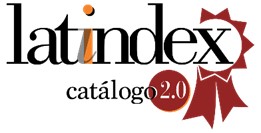Relations between the mathematical modelling and the inquiry processes from the perspective of mathematical learning
DOI:
https://doi.org/10.48489/quadrante.23590Keywords:
co-disciplinary teaching, middle grades, history, didactic suitability, inquiry, mathematical modellingAbstract
This article presents the results of a study aiming to identify the relations that can be established between the mathematical modelling and the inquiry processes, based on the implementation of a co-disciplinary didactic sequence on mathematics and history, with students aged 13-14 from a secondary school in Badalona (Catalonia, Spain). A problem situation from a real context was posed about an archaeological site in the city of the participants. It motivated them to carry out an inquiry where they developed different models in order to provide plausible and argued solutions to the problem. The processes of modelling and inquiry that emerged at different moments of the implementation were analysed, seeking to establish possible conclusions about the relation between both processes. Concerning the findings, it is highlighted that when the data obtained from the inquiry process are able to be mathematised, processes of mathematical modelling occur and the answers given by the students are more precise and justified; therefore, as expected in the designed planning, the didactic sequence presents a considerable wealth of mathematical processes, which particularly entails a highly positive view on its epistemic suitability.
References
Artigue, M., & Baptist, P. (2012). Inquiry in mathematics education. The Fibonacci Project. Retrieved from https://www.fondation-lamap.org/sites/default/files/upload/media/minisites/international/Inquiry%20in%20Mathematics%20Education_web.pdf
Artigue, M., & Blomhøj, M. (2013). Conceptualizing inquiry-based education in mathematics. ZDM Mathematics Education, 46(6), 797-810. https://doi.org/10.1007/s11858-013-0506-6
Artigue, M., Dillon, J., Harlen, W., & Léna, P. (2012). Learning through inquiry. The Fibonacci Project. Retrieved from https://www.fondation-lamap.org/sites/default/files/upload/media/minisites/action_internationale/learning_through_inquiry.pdf
Blomhøj, M. (2004). Mathematical modelling: A theory for practice. In B. Clarke et al. (Eds.), International perspectives on learning and teaching mathematics (pp. 145-159). Gotemburgo, Suecia: National Center for Mathematics Education.
Blomhøj, M., & Jensen, T. H. (2003). Developing mathematical modelling competence: conceptual clarification and educational planning. Teaching Mathematics and its Applications: An International Journal of the IMA, 22(3), 123-139. https://doi.org/10.1093/teamat/22.3.123
Blum, W. (2011). Can modelling be taught and learnt? Some answers from empirical research. In G. Kaiser, W. Blum, R. Borromeo Ferri, & G. Stillman (Eds.), Trends in teaching and learning of mathematical modelling: ICTMA 14 (pp. 15-30). Dordrecht, The Netherlands: Springer. https://doi.org/10.1007/978-94-007-0910-2_3
Blum, W., & Leiß, D. (2007). How do students and teachers deal with modelling problems? In C. Haines, P. Galbraith, W. Blum, & S. Khan (Eds.), Mathematical modelling (ICTMA 12): Education, engineering and economics (pp. 222-231). Chichester, England: Horwood. https://doi.org/10.1533/9780857099419.5.221
Borromeo Ferri, R. (2006). Theoretical and empirical differentiations of phases in the modelling process. Zentralblatt für Didaktik der Mathematik, 38(2), 86-95. https://doi.org/10.1007/bf02655883
Borromeo Ferri, R. (2018). Learning how to teach mathematical modeling in school and teacher education. Cham, Switzerland: Springer. https://doi.org/10.1007/978-3-319-68072-9
Breda, A., Font, V. & Pino-Fan, L. (2018). Criterios valorativos y normativos en la Didáctica de las Matemáticas: El caso del constructo idoneidad didáctica. BOLEMA: Boletim de Educação Matemática, 32(60), 255-278. https://doi.org/10.1590/1980-4415v32n60a13
Breda, A., Pino-Fan, L. & Font, V. (2017). Meta didactic-mathematical knowledge of teachers: Criteria for the reflection and assessment on teaching practice. EURASIA: Journal of Mathematics Science and Technology Education, 13(6), 1893-1918. https://doi.org/10.12973/eurasia.2017.01207a
Cohen, L., Manion, L., & Morrison, K. (2018). Research methods in education (8va ed.). New York, NY: Routledge.
Departament d’Educació. (2019). Currículum educació secundària obligatòria. Barcelona, Spain: Generalitat de Catalunya.
Doorman, M., Jonker, V., & Wijers, M. (2016). Mathematics and Science in life: Inquiry learning and the world of work. Friburgo de Brisgovia, Alemania: University of Education Freiburg. Retrieved from https://mascil-project.ph-freiburg.de/images/pdf/Mascil_BOOK_EN_web.pdf
Dorier, J.-L., & Maaß, K. (2014). Inquiry-based mathematics education. In S. Lerman (Ed.), Encyclopedia of mathematics education (pp. 300-304). Dordrecht, The Netherlands: Springer. https://doi.org/10.1007/978-94-007-4978-8_176
Font, V., Planas, N., & Godino, J. D. (2010). Modelo para el análisis didáctico en educación matemática. Journal for the Study of Education and Development – Infancia y Aprendizaje, 33(1), 89-105. https://doi.org/10.1174/021037010790317243
Godino, J. D., Batanero, C., & Font, V. (2007). The onto-semiotic approach to research in mathematics education. ZDM Mathematics Education, 39(1), 127-135. https://doi.org/10.1007/s11858-006-0004-1
Harlen, W. (2012a). The tools for enhancing inquiry in science education and inquiry in mathematics. In S. Borda (Coord.), Tools for enhancing inquiry in science education (pp. 31-34). The Fibonacci Project. Retrieved from https://www.fondation-lamap.org/sites/default/files/upload/media/minisites/international/Tools%20for%20Enhancing%20Inquiry%20in%20Science%20Education-web.pdf
Harlen, W. (2012b). Inquiry in science education. The Fibonacci Project. Retrieved from https://www.fondation-lamap.org/sites/default/files/upload/media/minisites/international/Inquiry%20in%20Science%20Education_web.pdf
Ledezma, C., Font, V., & Sala Sebastià, G. (in press). Un análisis onto-semiótico de la actividad matemática del proceso de modelización. Investigación en educación matemática XXIV.
Ledezma, C., Font, V., & Sala Sebastià, G. (2021). Análisis de la reflexión realizada por un futuro profesor sobre el papel de la modelización matemática en la mejora de un proceso de instrucción para enseñar trigonometría. PARADIGMA, 42(Extra 2), 290-312. https://doi.org/10.37618/PARADIGMA.1011-2251.2021.p290-312.id1043
Lesh, R., & Doerr, H. M. (Eds.). (2003). Beyond constructivism: Models and modeling perspectives on mathematics problem solving, learning, and teaching. Mahwah, NJ: Lawrence Erlbaum.
Maaß, K. (2006). What are modelling competencies? Zentralblatt für Didaktik der Mathematik, 38(2), 113-142. https://doi.org/10.1007/bf02655885
Maaß, K., & Doorman, M. (2013). A model for a widespread implementation of inquiry-based learning. ZDM Mathematics Education, 45(6), 887-899. https://doi.org/10.1007/s11858-013-0505-7
Maaß, K., & Engeln, K. (2018). Impact of professional development involving modelling on teachers and their teaching. ZDM Mathematics Education, 50(1-2), 273-285. https://doi.org/10.1007/s11858-018-0911-y
Maaß, K., Wernisch, D., Schäfer, E., & Aldorf, A.-M. (2015). MASCIL: Maths and science for life! In K. Maaß et al. (Eds.), Educating the educators: international approaches to scaling-up professional development in mathematics and science education (pp. 18-22). Munich, Germany: Verlag für wissenschaftliche Texte und Medien.
Padrós, P., & Moranta, L. (2001). La ciutat i la memoria. El teatre romà de Baetulo. Carrer dels Arbres, 3a època, 12, 15-31.
Sala Sebastià, G. (2016). Competència d’indagació matemàtica en contextos històrics a primària i secundària (Tesis doctoral). Universitat de Barcelona, Barcelona, Spain. Retrieved from https://www.tdx.cat/handle/10803/388035
Sala Sebastià, G., Font, V., Barquero, B., & Giménez, J. (2017). Mathematical modelling in an archaeological context: Their complementarity as essential tool for inquiry. In T. Dooley & G. Gueudet (Eds.), Proceedings of the Tenth Congress of the European Society for Research in Mathematics Education (pp. 988-995). Dublin, Ireland: DCU Institute of Education, ERME.
Sala Sebastià, G., Font, V., & Giménez, J. (2015). Una mirada curricular a la competencia de indagación. In C. Fernández, M. Molina, & N. Planas (Eds.), Investigación en educación matemática XIX (pp. 485-490). Alicante, Spain: SEIEM.
Sala Sebastià, G., Font, V., Giménez, J., & Barquero, B. (2017). Inquiry and modelling in a real archaeological context. In G. Stillman, W. Blum, & G. Kaiser (Eds.), Mathematical modelling and applications: Crossing and researching boundaries in mathematics education (pp. 325-335). Cham, Suiza: Springer. https://doi.org/10.1007/978-3-319-62968-1_28
Stake, R. E. (2005). Qualitative case studies. In N. K. Denzin & Y. S. Lincoln (Eds.), The SAGE handbook of qualitative research (3ra ed.) (pp. 443-466). Thousand Oaks, CA: Sage.
Wittgenstein, L. (1988). Investigaciones filosóficas (Trabajo original publicado en 1953). Barcelona, Spain: Editorial Crítica.










